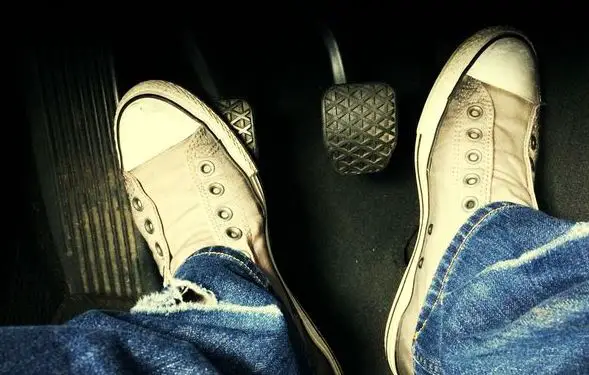If you are familiar with manual transmissions, you might have come across the term “dumping the clutch.” For many car enthusiasts, this phrase is part and parcel of a language that communicates the nuances of car maintenance and the art of driving. But what does “dumping the clutch” in your car actually mean?
In this guide, we will delve deep into the mechanics of manual transmission and clutch control to unravel the mystery behind this term. Understanding what it means to “dump the clutch” can not only enhance your driving technique but also help in avoiding some unwanted situations on the road.
Whether you are a seasoned driver looking to refine your skills or a beginner aiming to get a grasp of advanced driving techniques, this blog will steer you in the right direction. Stick with us as we navigate the world of manual transmission and explore the pros, cons, and the right way to “dump the clutch.”
Dump The Clutch Meaning
Dumping the clutch refers to the action of releasing the clutch pedal rapidly, allowing the engine and transmission to engage suddenly. This technique can result in a quick acceleration if done correctly, but can also be harsh on the car’s components if misapplied.
The clutch is a device that connects and disconnects the engine from the transmission, permitting the smooth transition of power to the wheels. When you press down on the clutch pedal, you’re disengaging the engine from the transmission, effectively breaking the connection. When you release it, you’re re-engaging the engine with the transmission, letting power flow from one to the other.
The Steps Involved in Dumping the Clutch
- Engaging First Gear: Before dumping the clutch, the car must be in the first gear or any other appropriate gear for the situation.
- Pressing Down the Clutch Pedal: Fully depress the clutch pedal to disengage the engine from the transmission.
- Revving the Engine: While the clutch is depressed, the accelerator is pressed to increase the engine’s RPM.
- Rapid Release: This is where “dumping” comes in. The clutch pedal is released quickly, allowing the engine’s power to suddenly engage with the transmission. This rapid engagement can lead to a burst of acceleration, often used in racing or sporty driving scenarios.
When done correctly and in the right context, dumping the clutch can give drivers a quick start, often seen in drag races. However, it’s essential to understand that this technique can be very harsh on the car’s mechanical components. Over time, or if done improperly, it can lead to wear and tear on the clutch and related systems, potentially resulting in expensive repairs.
The Pros and Cons of Dumping the Clutch
For many automotive enthusiasts, dumping the clutch is an exhilarating move, often linked with adrenaline-pumping starts and sporty driving styles. However, like many things in life, this technique comes with its own set of advantages and disadvantages. Let’s explore them.
+Pros of Dumping the Clutch:
- Rapid Acceleration:
- One of the primary reasons drivers dump the clutch is to achieve a quick acceleration, especially in racing scenarios like drag races. By rapidly engaging the engine and transmission, the car gets an instant boost, thrusting it forward.
- Advanced Maneuvering:
- For seasoned drivers, dumping the clutch can aid in specific maneuvers, such as drifting. By momentarily breaking traction in the rear tires, drivers can initiate controlled slides.
- Showing Off:
- Let’s be honest; part of the appeal is the thrill and the show-off factor. The sudden roar of the engine and the quick move can be a spectacle, especially in car meets and shows.
-Cons of Dumping the Clutch:
- Wear and Tear:
- The primary downside is the accelerated wear and tear on the car’s components, specifically the clutch, transmission, and drivetrain. Over time, or with frequent dumping, these parts can degrade faster, leading to costly replacements.
- Potential Loss of Control:
- If not executed correctly, dumping the clutch can cause the car to jerk violently, leading to a potential loss of control. This is especially risky in wet or icy conditions.
- Strain on Engine and Transmission:
- Beyond just the clutch, the sudden surge of power can put undue stress on the engine and transmission, potentially shortening their lifespan.
- Fuel Inefficiency:
- Quick accelerations and high RPMs generally lead to higher fuel consumption, making the practice less fuel-efficient.
Tips and Advice for Dumping the Clutch
If you’re considering trying the clutch dumping technique, safety and a clear understanding of the process are vital. Here’s your guide to doing it right:
1)Before You Begin:
- Understand Your Vehicle- Learn about your car’s clutch system response to different pressures and release speeds.
- Ensure Proper Maintenance- Regular check-ups to keep the clutch and transmission systems in optimal condition.
2)Choosing the Right Moment:
- Safe Environment- Avoid crowded areas; opt for controlled environments like an empty parking lot or a race track.
- Situational Awareness- Be mindful of traffic conditions and ensure safety before executing this technique.
3)The Execution Phase:
- Balanced Acceleration- While releasing the clutch rapidly, control the accelerator to manage power delivery effectively.
- Quick Reflexes- Be prepared to moderate the throttle or brake quickly if necessary.
4)After Dumping the Clutch:
- Smooth Transitions- Shift to higher gears smoothly to maintain a steady drive and avoid engine strain.
- Vehicle Check- Post-execution, inspect your vehicle for any unusual noises or issues.
5)Mastering the Technique:
- Practice in a Safe Space- Repeat the technique in a secure environment to perfect control.
- Expert Guidance- Consider taking a course from seasoned drivers to improve your skills.
Frequently Asked Questions (FAQ)
Q1: Is dumping the clutch bad for all cars, or does it depend on the specific build and model?
The impact of dumping the clutch can indeed vary based on the build and model of the car. Some high-performance cars are built to withstand such abrupt actions more resiliently than daily commuter cars. However, repeated clutch dumping can potentially harm any vehicle over time.
Q2: Can you dump the clutch in an automatic car?
Technically, automatic cars do not have a clutch pedal to “dump.” This technique is specific to manual transmissions where the driver has control over the clutch. However, in automatic cars, similar rapid acceleration effects might be achieved through other techniques, such as brake boosting.
Q3: Is clutch dumping considered a professional racing technique?
While it is used in various racing scenarios for quick starts, it is generally not considered a professional technique due to the high risk of vehicle damage and loss of control. Professional racers have other techniques at their disposal for controlled, rapid acceleration.
Q4: Can repetitive clutch dumping affect the resale value of a car?
Yes, excessive clutch dumping can lead to a decrease in the car’s resale value. It can cause notable wear and tear on the vehicle’s transmission system, which prospective buyers may view unfavorably. It’s recommended to maintain the vehicle well and repair any damages if you plan to sell it in the future.
Q5: Is there a recommended speed limit while dumping the clutch?
There isn’t a universal speed limit for dumping the clutch as it largely depends on individual vehicle specifications and the driver’s intent. However, it is typically performed at lower speeds to initiate a rapid acceleration. Drivers should always prioritize safety and adhere to legal speed limits.










[…] clutch can last on a car for up to 150,000 miles depending on the quality and how it’s used. If your clutch has been on there unchanged for many tens of thousands of miles, it could just be […]
[…] you maintain the RPM in the optimal range, it’s time to release the clutch gradually but relatively quickly to initiate the launch. This step is perhaps the trickiest, as […]